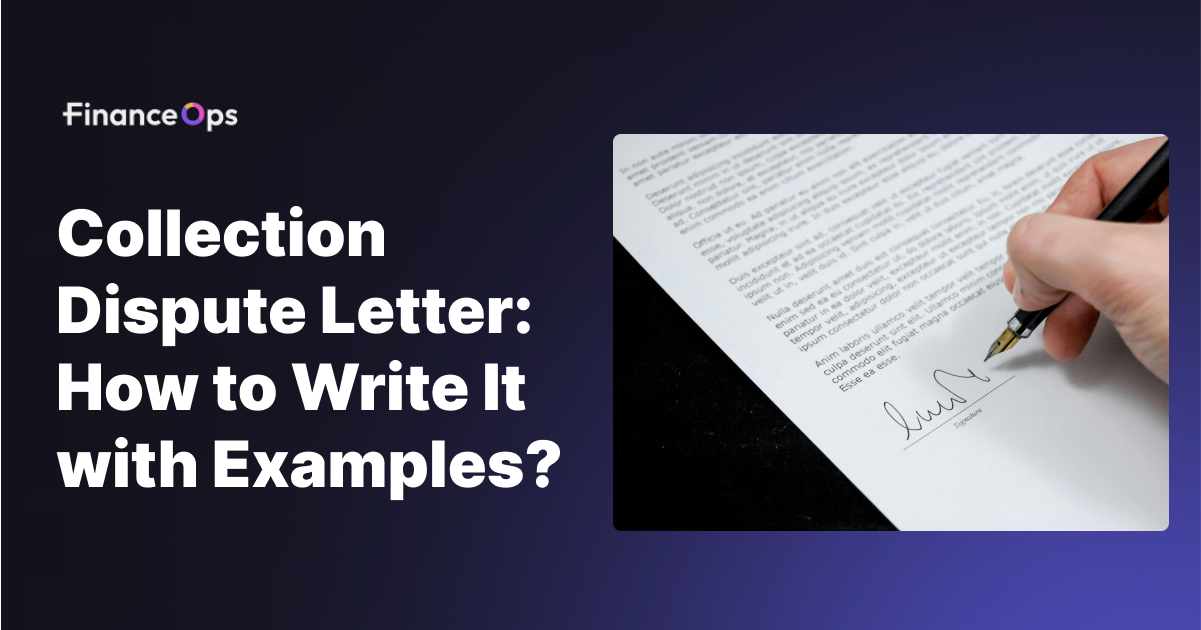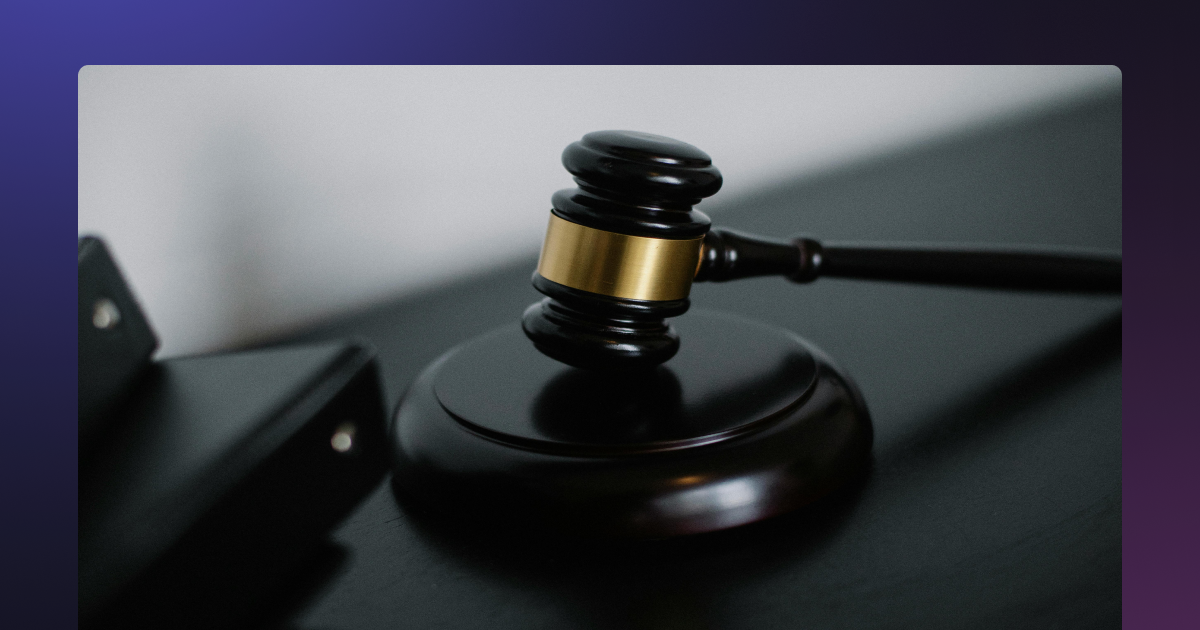Collection Dispute Letter: How Do You Write It—Steps and Examples

Let’s say one day you are checking your credit reports and find an outstanding balance on a closed account, a debt you’re certain was paid off years ago. Without intervention, this error could negatively impact your credit rating and even affect future financial opportunities.
According to Forbes, about 34% of Americans have found errors on their credit reports, which indicates that this problem is more common than you think. This is where a collection dispute letter becomes essential.
By formally challenging inaccurate collections, you create a clear record of your dispute, increasing the likelihood of a timely resolution. So, in this blog, you’ll find step-by-step instructions on how to craft a collection dispute letter, as well as examples and advice to avoid common mistakes.
What Is a Collection Dispute Letter?
A collection dispute letter is a formal document sent to a creditor, debt collection agency, or credit bureau to challenge the accuracy of reported debt. It enables consumers to address discrepancies in their credit history, such as incorrect balances, duplicate listings, or debts that have already been paid, and request their removal.
The purpose of a collection dispute letter is to prevent these inaccuracies from impacting your credit score and to protect your financial standing. When written effectively, this letter prompts the collector or credit bureau to investigate the debt in question.
According to the Fair Debt Collection Practices Act (FDCPA), consumers have the right to request verification and documentation of any debt reported on their credit file. The process generally involves detailing the debt in dispute, providing relevant documentation as evidence, and requesting an update or correction to your credit report.
For example, if you've paid off an account that continues to show as overdue, including proof of payment in the letter will support your claim. By addressing errors swiftly, a collection dispute letter helps ensure your credit report reflects an accurate financial history, reducing the risk of future credit denials or higher interest rates. This step is essential for maintaining control over your credit profile and economic health.
Why Send a Collection Dispute Letter?

A collection dispute letter is more than just a formal request; it’s a powerful tool for protecting financial integrity. It helps in disputing errors on your credit report and safeguards your credit score to maintain a healthy financial record. Here are the top benefits of sending a collection dispute letter:
1. Protect your credit score
A collection dispute letter can prevent incorrect information from damaging your credit score, which is critical for obtaining loans, credit cards, and favorable interest rates. By disputing errors early, you protect your overall financial reputation and increase access to better credit opportunities.
2. Avoid unnecessary financial loss
Errors on your credit report can lead to wrongful charges, fees, or penalties. Disputing these can save you from unwarranted financial burdens and ensure you only pay for legitimate debts. This proactive step helps you avoid costly issues later on.
3. Prevent harassment from collection agencies
A dispute letter may halt collection activities on inaccurate debts until they’re verified. This means fewer calls, emails, and other collection attempts that can feel invasive and stressful. It’s a protective measure for your peace of mind.
4. Establish a record of dispute
Sending a dispute letter formally records your effort to address inaccuracies. This documentation can be helpful for any future disputes, proving to lenders or collection agencies that you acted responsibly in resolving credit issues.
5. Exercise your rights under the FDCPA
The Fair Debt Collection Practices Act allows you to dispute and verify any debt claims made against you. A dispute letter enforces your legal right to fair treatment and holds collectors accountable for providing proof of the debt.
6. Resolve debt confusion or errors
A collection dispute letter clarifies your credit report by correcting duplicate listings, identity theft, or errors. It ensures you aren’t wrongly held accountable for debts you Don’t owe or have already been resolved, keeping your records accurate.
7. Secure better financial opportunities
A clear, accurate credit report can help you qualify for better Loan rates, insurance premiums, and housing options. By proactively disputing incorrect debts, you maintain a strong financial profile, opening doors to a wider range of opportunities.
Step-by-Step Guide to Write a Collection Letter
A well-crafted collection dispute letter can help you effectively challenge errors on your credit report. Each step in the process ensures that your dispute is clear, evidence-backed, and compliant with legal requirements. Here’s a simple, step-by-step guide to writing a powerful collection dispute letter:
- Gather all relevant information: Start by collecting all documents related to the debt, including account statements, proof of payment, and correspondence from the creditor. This evidence Will support your claim and provide a clear foundation for your dispute.
- Include your contact details and account information: At the top of the letter, include your full name, address, and contact information. Clearly state the account number associated with the debt so that the recipient can easily identify the matter you’re disputing.
- State the purpose of the letter: Begin the body of your letter by stating that you are disputing the debt and require verification. Briefly mention the reason for the dispute—whether it’s an incorrect balance, duplicate listing, or unauthorized charge.
- Provide a detailed explanation of the dispute: Clearly explain why you believe the debt information is incorrect. Be specific—mention any discrepancies, dates, or circumstances that help clarify your reason for disputing the debt.
- Request verification or removal of the debt: Ask the creditor or collection agency to verify the debt or, if applicable, remove the inaccurate listing from your credit report. This signals your expectation for a prompt investigation and resolution of the issue.
- Attach supporting documents: Include copies (not originals) of documents that support your claim, such as payment receipts or statements. These attachments Will strengthen your case by providing proof of payment or errors on the creditor’s Part.
- Request written confirmation: Ask for a written response confirming their action on your dispute. A documented response not only provides peace of mind but also ensures there’s an official record of the resolution.
- Sign and date the letter: To make your letter official, end it with a signature and date. This step finalizes your request and reinforces your professional commitment to resolving the dispute.
- Send the letter by certified mail: Mail your dispute letter with a return receipt to ensure it’s received. This gives you proof of delivery and helps track your letter in case further follow-up is needed.
Examples of Collection Dispute Letters

Here are two collection dispute letters that provide clarity and specific details to help creditors or collection agencies understand and act on your dispute effectively.
Common Mistakes to Avoid When Writing a Collection Dispute Letter
When writing a collection dispute letter, certain mistakes can weaken your case or delay resolution. Avoiding these errors can improve your chances of a successful dispute. Here are common mistakes to steer clear of:
- Using an informal tone: Keep the tone formal and professional. Avoid language that is overly emotional or aggressive, as this can reduce the letter’s effectiveness.
- Omitting Key details: Always include your account number, date of dispute, and specific reasons for disputing the debt. Missing information May delay the process.
- Failing to attach evidence: Attach copies of supporting documents, such as payment receipts or identification, to substantiate your dispute. Evidence strengthens your case.
- Neglecting to keep copies: Always keep copies of the letter and attachments for your records. This documentation is useful for follow-up or if further issues arise.
- Not requesting written confirmation: Ask for a written response to confirm the action taken on your dispute. This adds accountability and helps track the dispute’s progress.
- Using original documents instead of copies: Never send original documents, as they May not be returned. Use copies to avoid losing important paperwork.
- Skipping certified mail for delivery: Sending your letter via certified mail provides proof of delivery. It’s a secure method that ensures the agency receives your dispute.
- Being too vague about the dispute: Specify the issue and reason for disputing the debt, such as an incorrect balance or identity theft. Vague statements can hinder a quick resolution.
When to Seek Legal Help for Disputed Collections?

Seeking legal help for disputed collections is crucial in several scenarios, particularly when the stakes are high. If you’ve attempted to resolve the dispute through standard channels without success, it may be time to consult an attorney. Legal professionals can provide guidance on how to effectively challenge the debt and protect your rights under the Fair Debt Collection Practices Act (FDCPA).
Another situation that warrants legal assistance is when you’re facing harassment from collection agencies. If a collector employs aggressive tactics, such as repeated phone calls, threats, or misleading information, it’s essential to know your rights. An attorney can help you take action against these violations and may assist in filing a complaint with the Consumer Financial Protection Bureau (CFPB).
Additionally, if the disputed debt is substantial and could significantly impact your financial future, seeking legal advice is wise. An attorney can help you understand the implications of the debt and negotiate on your behalf. If the matter escalates to court, having legal representation ensures your interests are safeguarded.
Automate Your Collections and Reduce Opex by Upto 80% with FinanceOps
FinanceOps’ Genesis One platform. helps streamline your collection efforts, allowing businesses to automate repetitive tasks and minimize manual intervention. By leveraging AI-driven features, Genesis One enables you to manage collections more accurately and quickly.
With FinanceOps, you can reduce your operational expenses by up to 80% while staying on top of your collection efforts. The platform’s intelligent algorithms also help identify overdue accounts and prioritize them for follow-up, ensuring timely outreach to customers before accounts become severely delinquent.
Moreover, FinanceOps enhances customer engagement through personalized communication, fostering a more empathetic collection approach. This improves the chances of successful recovery and maintains positive relationships with customers, which is crucial for long-term loyalty.
By integrating FinanceOps into your financial operations, you can streamline collections, position your business for sustainable growth, and improve cash flow management.

